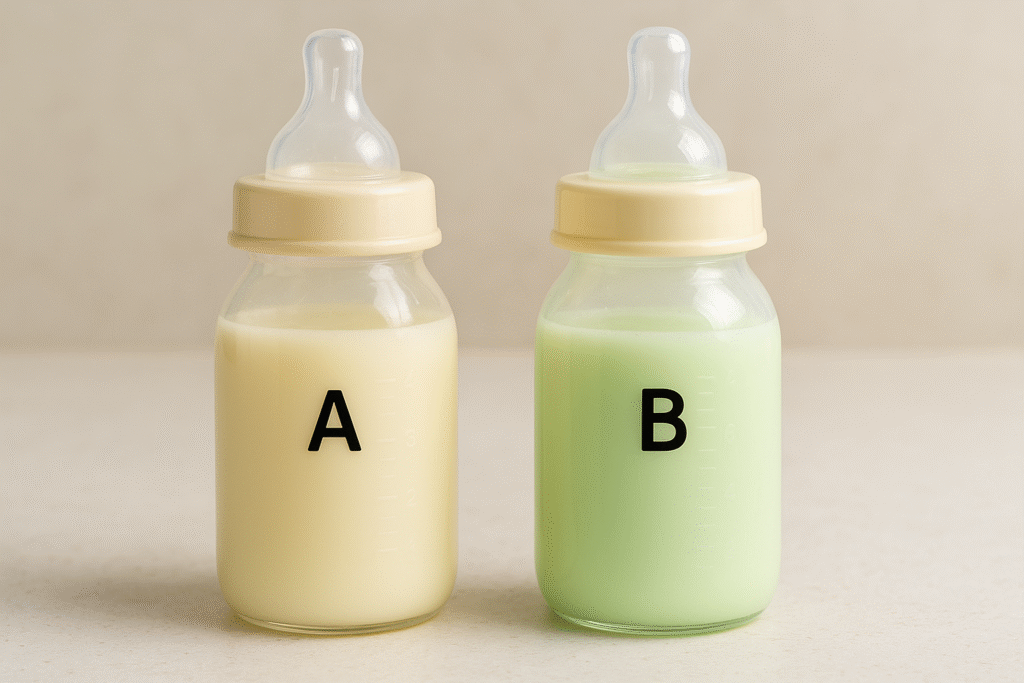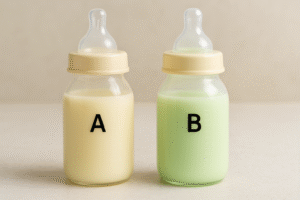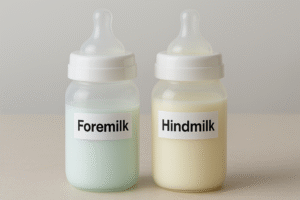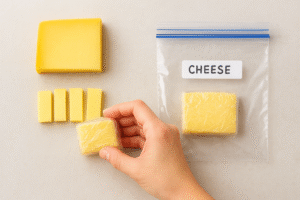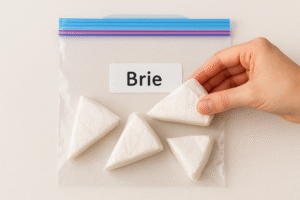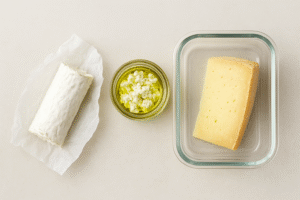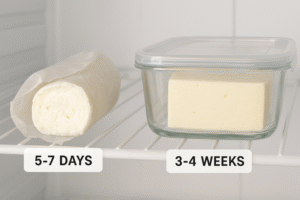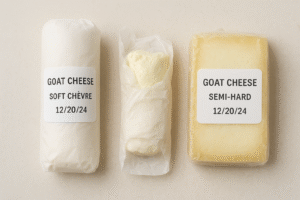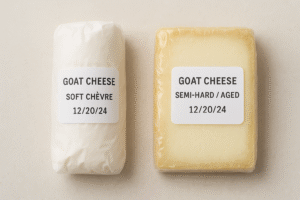Breast milk color can sometimes surprise new moms — especially when it turns greenish instead of the creamy white or pale yellow you expect. Don’t panic! A green tint in breast milk is usually harmless and often linked to your diet, supplements, or foremilk-hindmilk balance, not infection or spoilage.
This guide breaks down why your milk looks green, when to worry, and how to keep it safe for your baby — following U.S. safety and lactation expert recommendations.
👉 For a general overview of normal color variations, read our related article: Breast Milk Color: Complete U.S. Moms’ Guide.
🥦 Common Reasons Why Breast Milk Looks Green
1. Your Diet (Green Veggies & Smoothies)

Eating spinach, kale, broccoli, spirulina, or green smoothies can easily tint your milk green. The chlorophyll pigments from these foods pass through breast milk, giving it a mild hue.
Tip: This is totally safe — in fact, these veggies boost your vitamin and iron intake.
2. Vitamin or Supplement Intake
Taking green-colored vitamins or herbal supplements (like chlorella or spirulina) can slightly change milk color. This is not a cause for concern as long as your supplements are approved by your healthcare provider.
3. Foremilk vs. Hindmilk Balance
If you pump often, you may notice greener, thinner milk early in a session. This is foremilk, which contains more water and less fat. The thicker hindmilk comes later and is creamier in color. Uneven pumping or frequent switching can make your supply appear greenish.
👉 Learn more about milk texture and balance in our detailed post: Why Does My Breast Milk Look Watery?
4. Stored or Frozen Milk Discoloration
If your frozen milk looks slightly green after thawing, it’s likely due to lipase activity — an enzyme that breaks down milk fat. While it may change smell or color, it’s still safe if used within storage guidelines.
🧊 Step-by-Step: How to Check If Green Milk Is Still Safe
- Smell it after thawing: A mild soapy scent is normal due to lipase. Sour or metallic odors mean spoilage.
- Swirl gently: Don’t shake — this helps maintain fat integrity.
- Check for separation: A thin, clear layer over a greenish base is fine. But thick clumps or grayish color mean discard.
- Note the storage date: Follow CDC’s storage chart — 4 hours at room temp, 4 days in fridge, 6 months in deep freeze.
- Avoid refreezing: Once thawed, always use within 24 hours.
⚠️ One Small Addition for Perfection
💡 General Safety Tip: Never mix freshly pumped greenish milk with cold or previously stored milk until both are the same temperature.
👉 Learn more in our full guide: Can I Mix Warm and Cold Breast Milk?
🩺 When to Be Concerned
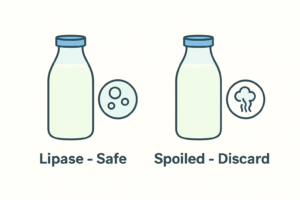
Although green milk is rarely dangerous, you should contact your doctor or lactation consultant if:
- The color looks bright neon green with a strong odor.
- You notice greenish pus or streaks (sign of infection).
- Your baby refuses to drink or shows discomfort after feeding.
If in doubt, express and inspect — and when unsure, discard.
💡 Immediate Action After Spoilage (Critical U.S. Safety Tip)
If you suspect your milk has spoiled (sour smell, clumps), do not attempt to shake it vigorously or reheat it to “check” the smell or taste.
Discard it immediately.
Taste-testing milk that may be contaminated poses a risk to you and your baby.
This small step saves time and ensures your baby’s complete safety.
🌿 Expert Note: According to U.S. Lactation Guidelines
The CDC and the American Academy of Pediatrics confirm that dietary pigments or oxidation cause most breast milk color changes. These do not affect safety or nutrition, as long as milk is properly stored and handled.
For official guidance, visit:
🔗 CDC – Proper Breast Milk Storage Guidelines
🔗 La Leche League International – Milk Appearance & Color
❓FAQ: Green Breast Milk Questions Answered
Q1: Is green breast milk safe for my baby?
Yes. It’s usually caused by your diet and is completely safe.
Q2: How long does green-tinted milk last in the fridge?
Use within 4 days, as per CDC guidelines, and always store at 39°F (4°C) or below.
Q3: Can I still freeze green breast milk?
Absolutely — color changes won’t affect nutrition.
Q4: Can illness or antibiotics cause green milk?
Sometimes mild tints may appear, but it’s not dangerous unless accompanied by foul smell or pain.
🍼 Conclusion
Green breast milk may look unusual, but it’s almost always harmless. Most of the time, it simply reflects your healthy diet or natural milk composition changes. Stay calm, store properly, and keep track of freshness.
If you’re managing stored milk or planning to freeze it, check our detailed guide on How Long Does Breast Milk Last in a Deep Freezer (U.S. Storage Guide 2025).

